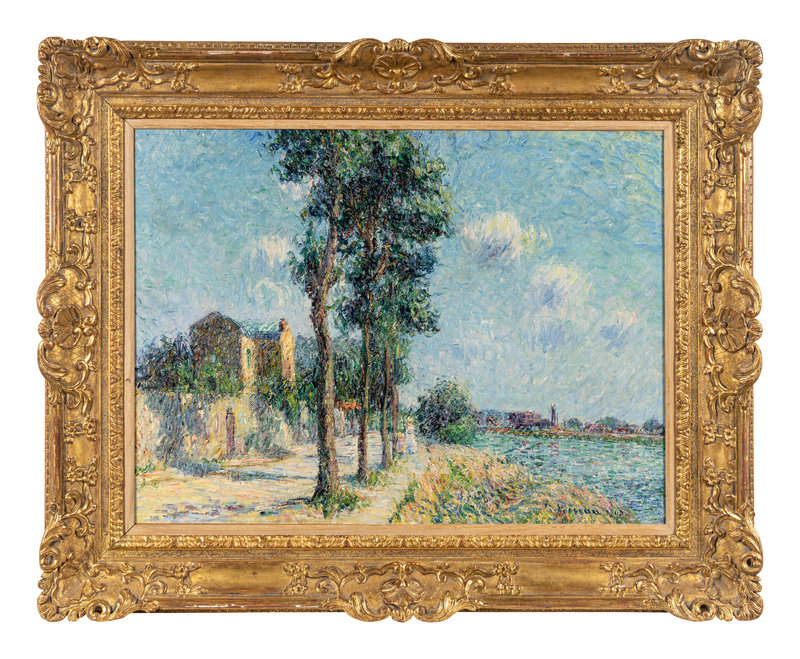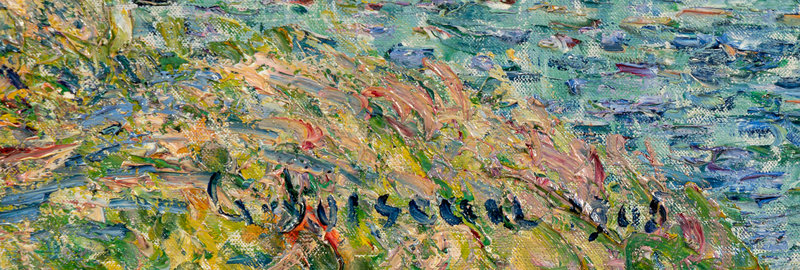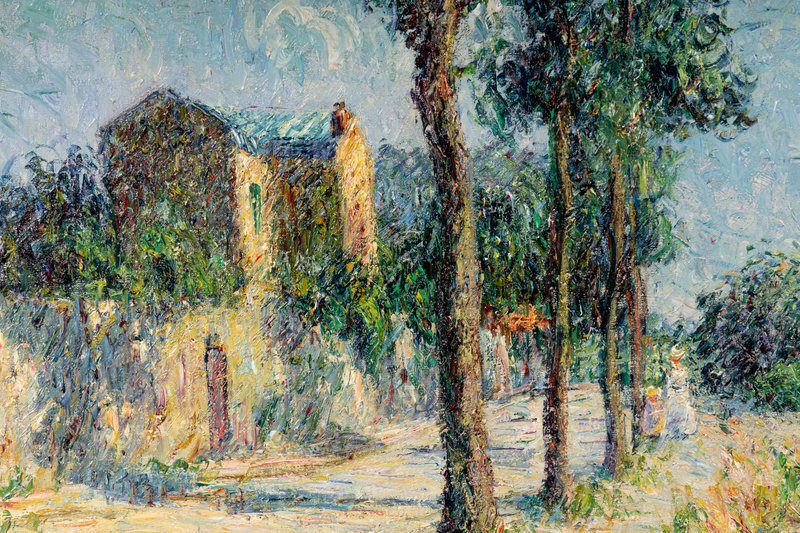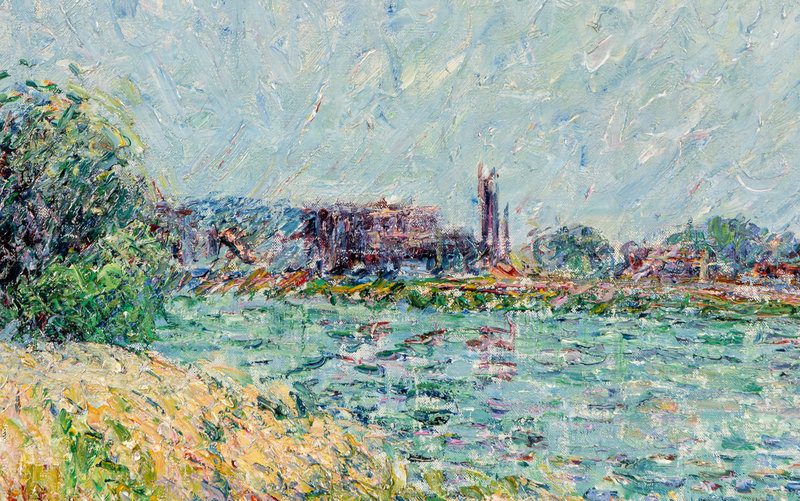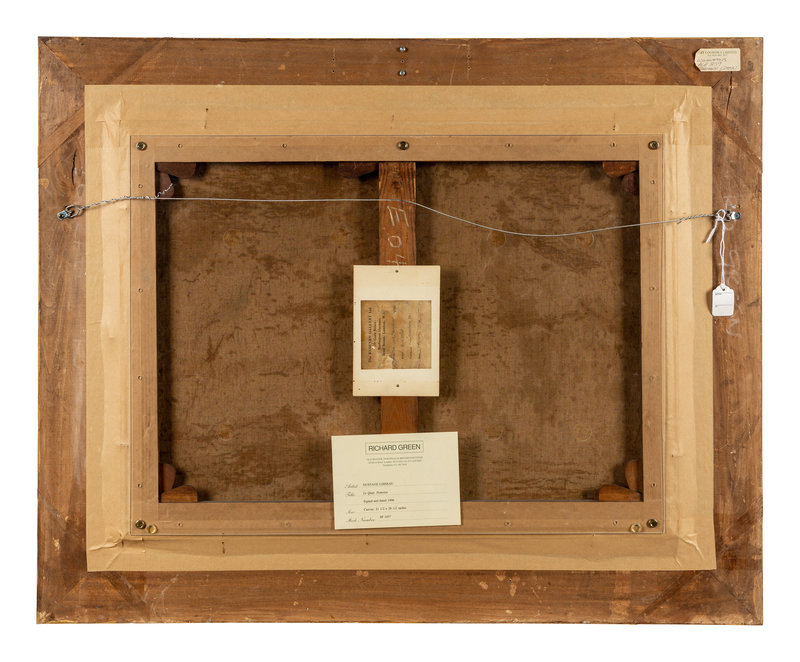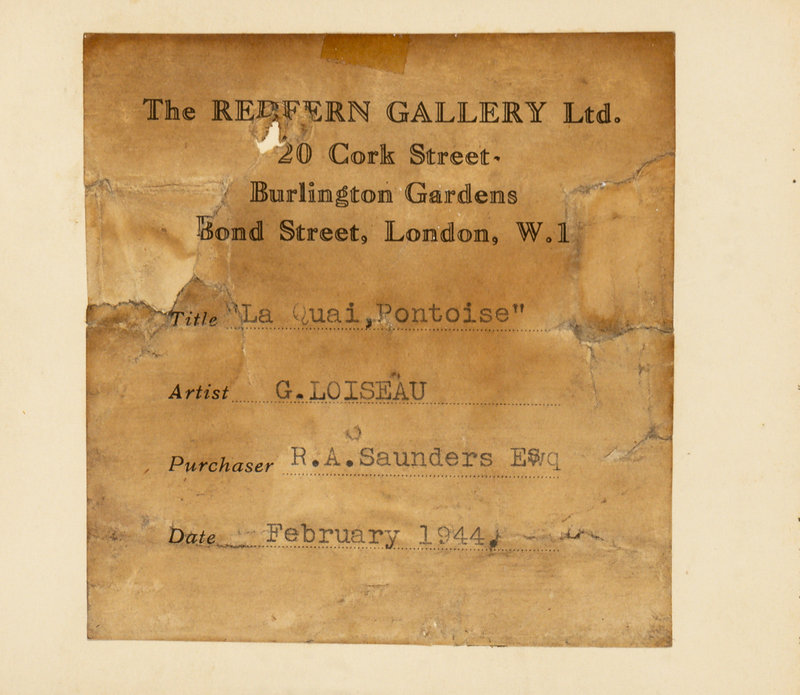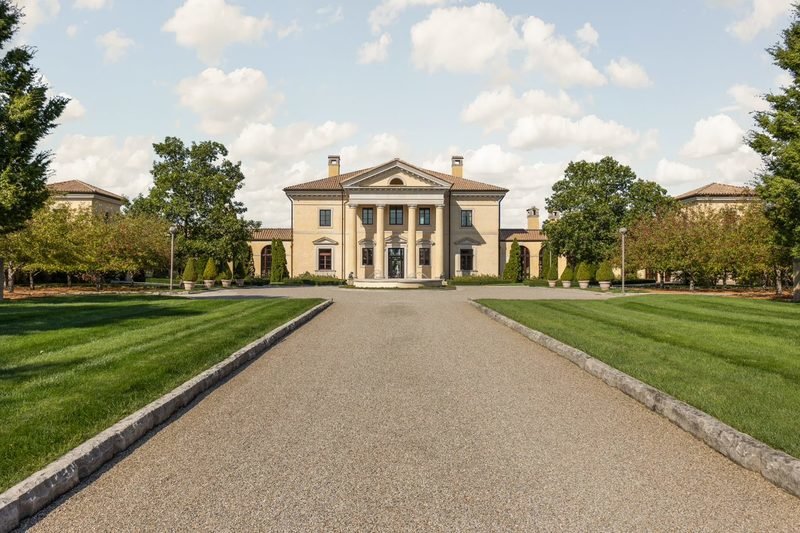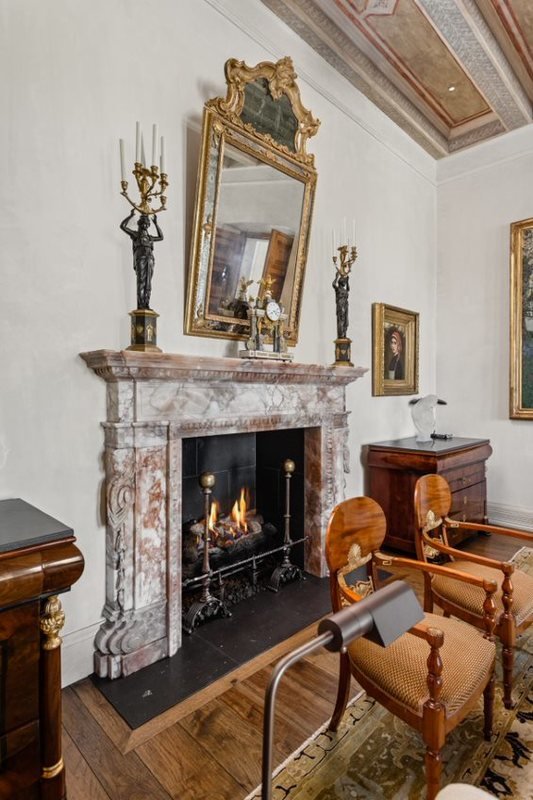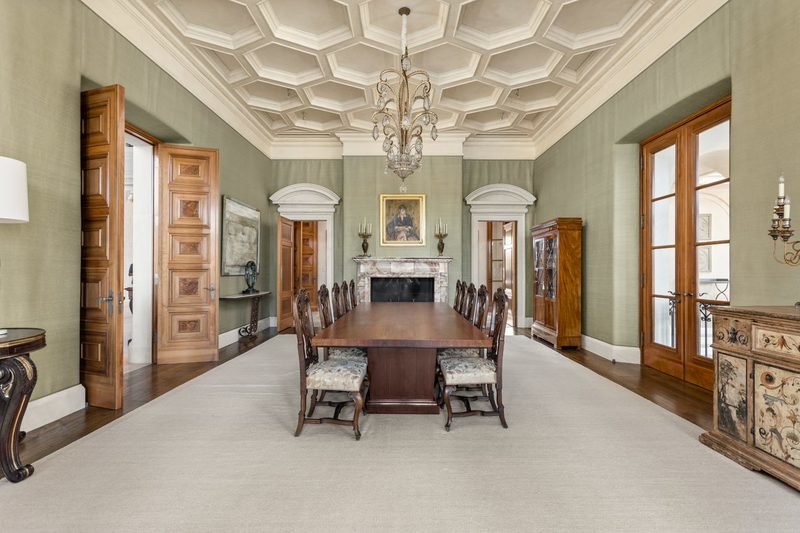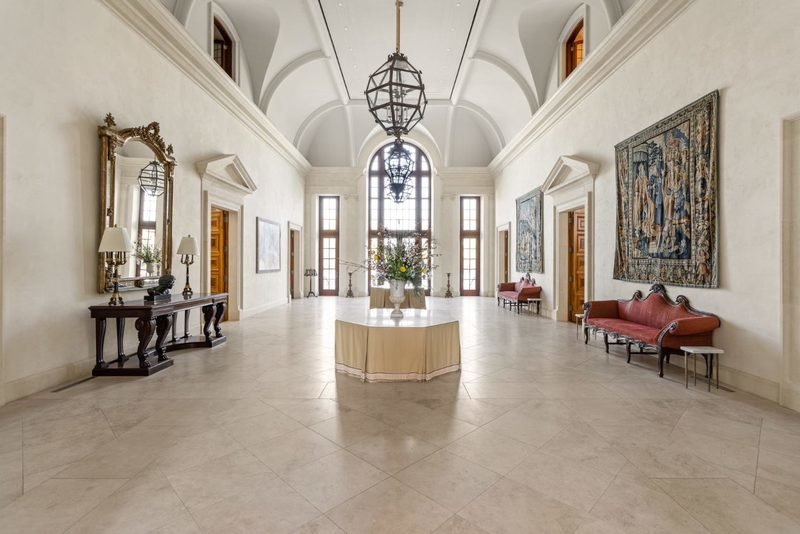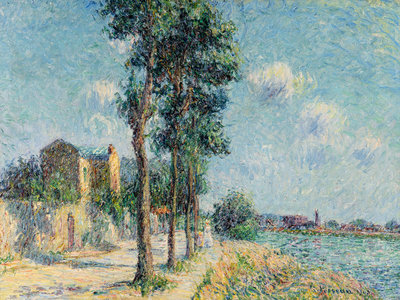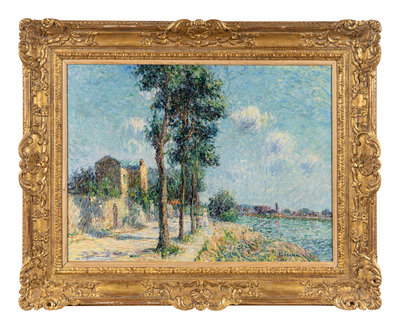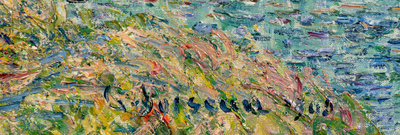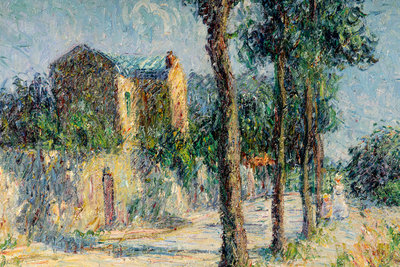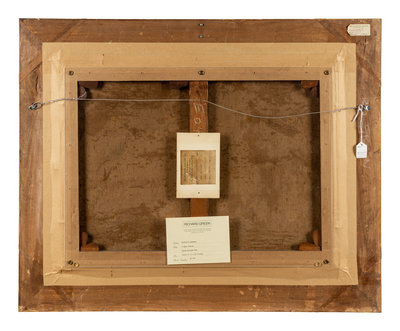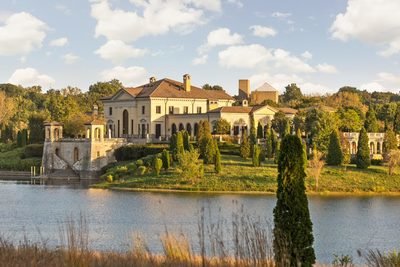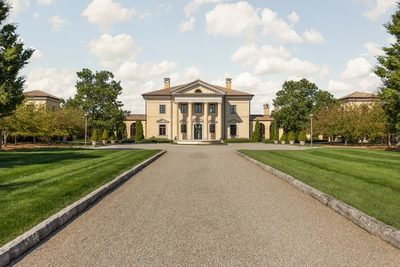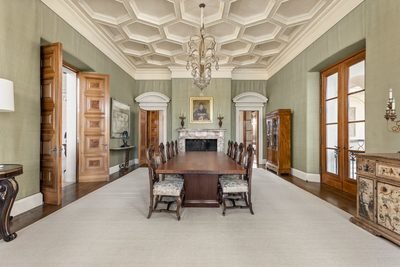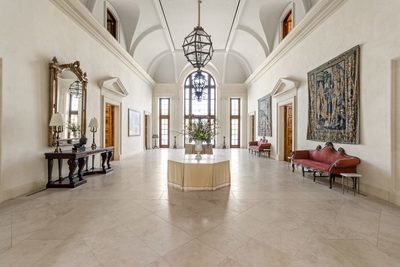Lot 23
This lot has been authenticated by Didier Imbert and will be included in the catalogue raisonné currently in preparation.
Provenance:
The Redfern Gallery, London (label verso)
R.A. Saunders, Esq., purchased from the above, February 1944
Sold: Sotheby's, New York, May 10, 1995, Lot 253
Richard Green, London (label verso)
Lot note:
Illustrating a clear, bright day along the River Oise, Le quai du Pothuis à Pontoise, 1905, is a superb example of Gustave Loiseau’s gently diffusive light as it reflects off the flowing water. Considered one of the foremost post-impressionist painters, he was greatly influenced by the generation of impressionists who came before him, including Claude Monet, Pierre-Auguste Renoir, and Camille Pissarro. Born in Paris to parents who ran a successful butcher shop, Loiseau was apprenticed to a house painter and then to a decorator, which aroused his interest in art. In 1887, he received an inheritance from his grandmother that allowed him to study art full time. He briefly attended the Ecole des Arts Décoratifs and then studied under the landscape painter Fernand Just Quignon.
On the advice of Quignon, in 1890, Loiseau traveled to Pont-Aven in Brittany, where he befriended the artists Maxime Maufra and Henry Moret. As he was mostly self-taught, Loiseau shaped his style through close observation of nature and careful scrutiny of his impressionist forebears. Like them, he was a champion of painting en plein air, yet he developed his own artistic technique that used a distinct cross-hatched brushstroke, called en treillis. This method created an evanescent quality and movement to his compositions and reveals the influence of pointillism in his work.
In 1895, Loiseau was introduced by Claude Monet to the art dealer Paul Durand-Ruel, who signed an exclusive contract with him two years later. The resulting financial independence allowed the artist to journey throughout France to paint various landscapes, including Normandy and Brittany, as well as the small towns along the Rivers Seine and Yonne. By 1904, Loiseau settled in Pontoise, a suburb northwest of Paris. Located along the River Oise, the town was popularized by Pissarro, who was later followed by other artists who came to depict the waterfront views.
Analogous to Monet, Loiseau explored in his canvases the different atmospheric conditions of Pontoise and its surrounding landscape and river. He painted the Quai du Pothuis in several compositions from a variety of views that range from misty mornings to brilliant, sunshine filled afternoons, such as can be seen in the present artwork. The richly pigmented surface is composed of spontaneous brushwork that is layered to create a scintillating dance of light. Tall trees line the riverbank and they cast deep, purpled shadows on a path that appears to glow with the heat of a summer sun. The water and grass lining the bank dazzle with staccato strokes of blue, green, yellow, and violet. Two small figures, a woman and child, can be seen at the focal point of the composition. Their miniscule presence serves to accentuate the broad expanse of river and land under the sweeping blue sky. This work masterfully highlights Loiseau’s experimental nature and his intuitive use of both impressionist and post-impressionist techniques to capture nature as it is experienced.

